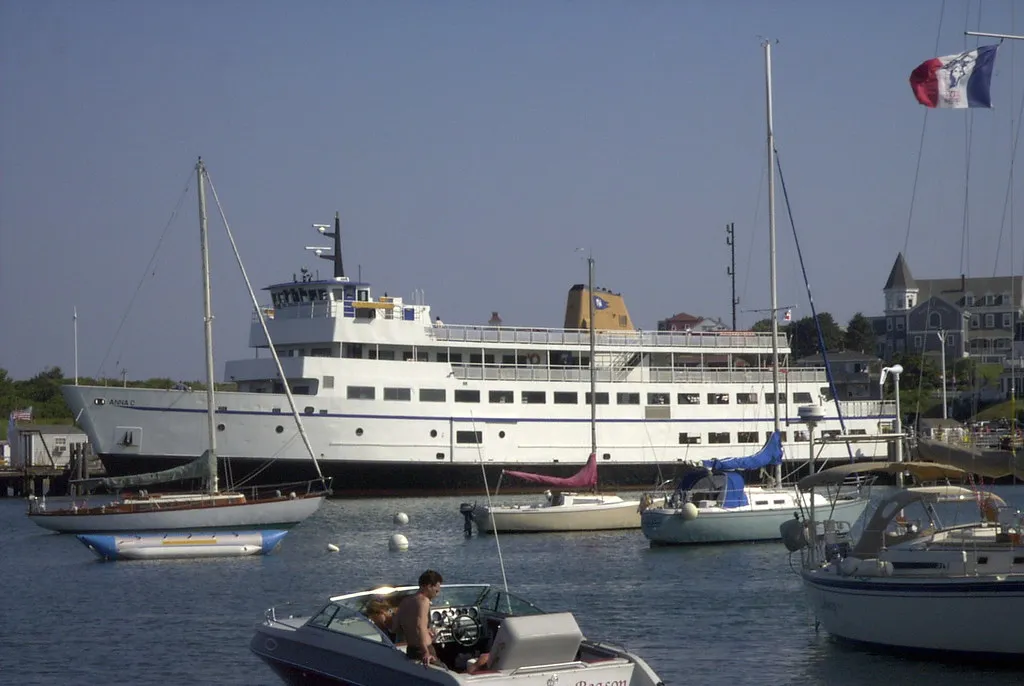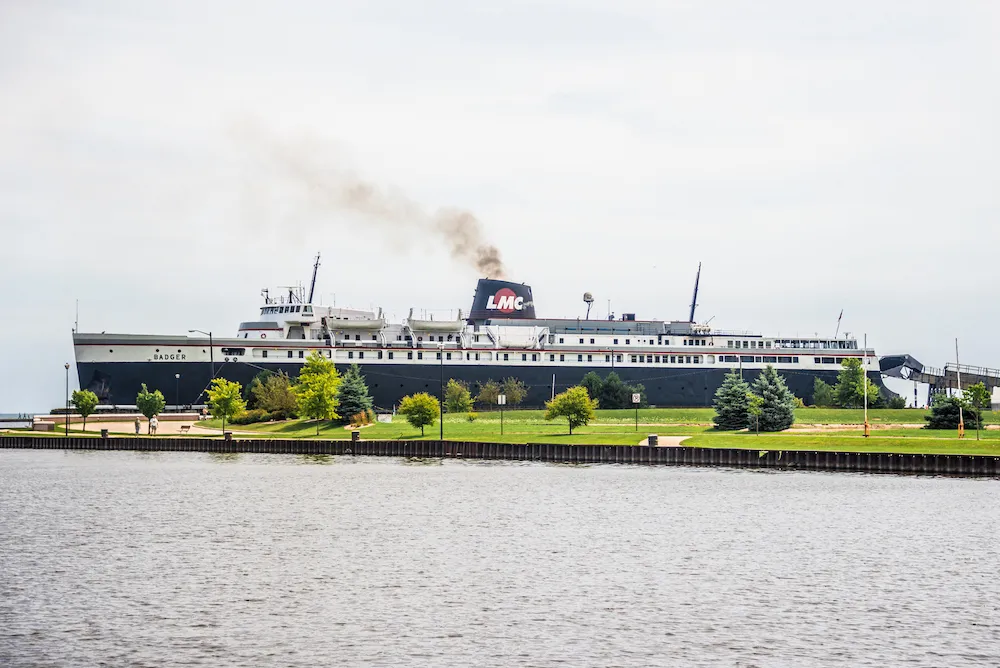Seven of the Most Scenic Ferry Rides in the United States
Skip the bridges and tunnels, and board a boat on your next road trip
:focal(333x561:334x562)/https://tf-cmsv2-smithsonianmag-media.s3.amazonaws.com/filer/5f/dd/5fdd71b6-e10f-47de-98bc-36d647790d9c/istock-614742084.jpg)
Bridges and tunnels may be the most convenient way to cross a body of water, but they’re far from scenic. If views are what you're seeking, a ferry ride is just the answer, whether you're in a car or on foot. According to the U.S. Bureau of Transportation, nearly 119 million passengers and 25 million motor vehicles received ferry transport in 2015, the bureau's most recent data, with New York and Washington being the two states with the most ferry boardings. Here are seven of the most scenic ferry rides this country has to offer.
Staten Island Ferry, New York City
/https://tf-cmsv2-smithsonianmag-media.s3.amazonaws.com/filer/68/54/685411c6-642f-408e-aa12-e32eb6ebeda9/istock-811935524.jpg)
Probably the most recognizable ferry in the United States and for good reason, the Staten Island Ferry shuttles 22 million passengers each year (70,000 each weekday) across the New York Harbor between Lower Manhattan and Staten Island. The cost for the five-mile, 25-minute ride: $0. And while most passengers use it for commuting between the two islands (before September 11 the ferries carried passenger vehicles), the ferry has also garnered a reputation for being “the poor man’s cruise,” eliciting spectacular views of the city’s hulking skyline along with the Statue of Liberty and Ellis Island. Plus, the fully stocked snack bar aboard is open 24/7 and serves beer. The Staten Island Ferry is one of the longest operating ferry lines in the United States, with origins dating back to 1817 when the Richmond Turnpike Company launched a steamboat service. Today the New York City Department of Transportation operates the nine-vessel fleet.
Block Island Ferry, Rhode Island

There are two ways to get to Block Island (also known as New Shoreham, Rhode Island), a pear-shaped speck of land situated just south of the state’s mainland: by plane or by ferry. The latter is the cheaper of the two options, with a fleet of six ferries shuttling pedestrians across Block Island Sound from Point Judith and Newport, Rhode Island, and Fall River, Massachusetts year round. (While you can make a reservation with the ferry service to bring your car, part of Block Island's allure is that it limits the number of motor vehicles on the island—most people get around on foot, bicycle or moped—plus getting a car there isn't cheap.) Depending on your point of origin and whether you’re onboard a traditional or high-speed ferry, travel times between ports can take between 30 minutes to a little over two hours, buying you more time to take in the endless great blue beyond.
Washington State Ferries, Washington
/https://tf-cmsv2-smithsonianmag-media.s3.amazonaws.com/filer/5f/dd/5fdd71b6-e10f-47de-98bc-36d647790d9c/istock-614742084.jpg)
As a city surrounded by water, Seattle would probably come to a standstill if it weren’t for its ferry service, which is open to both passengers and motor vehicles. At all hours of the day, ferries crisscross the Puget Sound carrying passengers from the Bainbridge Island and Seattle harbors to nearly two dozen ports of call in between. According to the Washington States Department of Transportation, which operates the 23-ferry fleet, 25 million passengers ride its vessels each year, and it’s no surprise. Besides being a popular mode of transport for locals in a city known for its gridlock, it’s also one of the best ways to get a sweeping view of Seattle’s skyline, including the Space Needle.
Galveston-Port Bolivar Ferry, Texas
/https://tf-cmsv2-smithsonianmag-media.s3.amazonaws.com/filer/e6/bf/e6bfb242-96b3-4d06-bd67-2e657201ee78/istock-458987459.jpg)
Texas State Highway 87 comes to a dead end when it meets Galveston Bay. Drivers can either turn around or drive aboard one of the Texas Department of Transportation’s fleet of nearly a half-dozen ferries. The voyage between Port Bolivar and Galveston is brief, taking about 18 minutes total to cross one of the world’s busiest waterways. While today TxDOT abides by a regular schedule that runs around the clock, when the first ferries embarked across the bay in the 19th century, skiffs only made the trip when they had paying passengers. These days it’s not uncommon for dolphins to swim alongside the ferries.
Alaska Marine Highway System, Alaska
/https://tf-cmsv2-smithsonianmag-media.s3.amazonaws.com/filer/c8/f8/c8f8b4f2-0c87-44fd-8630-16af63be50b0/1109147951_4fe1b35912_b.jpg)
Out of all the ferry operations in the United States, Alaska’s is easily the most extensive, with the Alaska Marine Highway operating a system comprised of 3,500 miles of routes navigated by a fleet of 11 vessels that can ferry both pedestrians and motor vehicles alike (even RVs!). No big surprise considering the state’s land size and the chain of islands that make up its southwestern coast. Traveling by ferry is the easiest way to access many of the 35 coastal communities serviced by the fleet, including popular locales like Glacier Bay National Park, the Inside Passage and Kenai Peninsula.
S.S. Badger Ferry, Michigan and Wisconsin

The S.S. Badger dubs itself as a “mini-cruise,” and it’s hard to not agree. From outdoor decks furnished with lounge chairs for sunbathing to a bloody Mary bar located on the upper deck, not to mention 40 staterooms, the ferry boasts perks not commonly found on most commuter vessels. The S.S. Badger travels the four-hour, 60-mile journey across Lake Michigan to ports in Manitowoc, Wisconsin, and Ludington, Michigan, providing daily service since 1953, and motor vehicles are welcome.
Cape May-Lewes Ferry, Delaware and New Jersey
/https://tf-cmsv2-smithsonianmag-media.s3.amazonaws.com/filer/a1/34/a134fb86-8ac4-4dd8-bd37-61004f7f504f/istock-1007546184.jpg)
Linking Cape May on New Jersey’s southern tip to Lewes, Delaware, the Cape May-Lewes Ferry provides an 85-minute journey past striking lighthouses and charming harbors, often escorted by a pod of dolphins or whales. Make sure to arrive early, as both ports are home to dockside grills known for serving New England clam chowder, conch fritters and burgers, not to mention a variety of coastal-inspired cocktails like Mai Tais and Rum Runners. In addition to its regularly scheduled year round crossings that can accommodate both passengers and motor vehicles, the ferry also hosts firework cruises, holiday brunches, wine dinners and other events.
Planning Your Next Trip?
Explore great travel deals
Smithsonian magazine participates in affiliate link advertising programs. If you purchase an item through these links, we receive a commission.